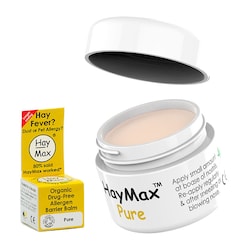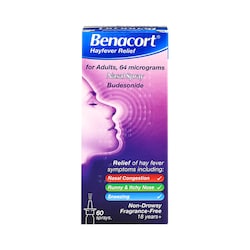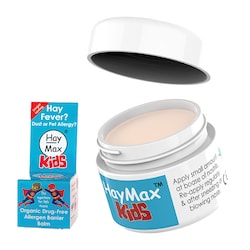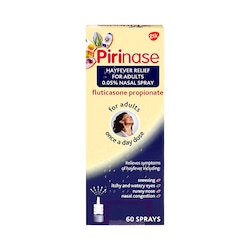15% off £30 OR 20% off £40
What is an amine & how can it be managed?

It’s a well-known fact that some people are allergic to certain food and therefore make sure they steer clear of it to avoid having an allergic reaction.
But what’s responsible for causing the reaction in the first time?
One of the main culprits, which very few people tend to know about, so don’t think about, is something called amines.
Want to know more about them? From what they are, to what they do and where you can find them, this article provides you with all the amines insight you need.
What are amines?
Vasoactive amines, or amines for short, are substances that are created when the protein that’s present within food starts to break down.
This is a common process that is usually caused by one or more things – food ageing; being cooked or processed.
All of these things can lead to food winding up containing higher levels of amines than they started with.
Interestingly, these levels also rise as food, particularly fruit, such as avocados and bananas, get riper as the days go by.1
There are various different types of amines.
Some are found in food and others are present in substances that exist within our body.
The different types of amines include:
- Dopamine
- Serotonin
- Adrenaline
- Histamine (e.g. wine)
- Tyramine (e.g. cheese)
- Phenylethylamine (e.g. chocolate)
Out of the various different types listed above, the most common types of amine are histamine, tyramine and phenylethylamine.
When it comes to food and amine levels, processed meat, organs, fermented food, soy sauce and cheese are widely reported to have the highest amine content.
What’s more, browning, grilling, charring and overcooking food can also increase amine levels, which leads to the creation of certain types of bacteria.
Summary
Amines are substances that are created when the protein in food and drink starts to break down due to ageing, cooking or processing.
Histamine, tyramine and phenylethylamine are the 3 most common types of amine.
What causes amine intolerance?
People can be intolerant to amines if their body struggles to process the excess amount of amines that they’ve consumed.
The volume of amines that people can digest without experiencing any sensitivities varies from person-to-person.2
Amines interact with the body by expanding our small blood vessels.
This is why it’s not uncommon for amine intolerance to trigger flushing, migraines and nasal congestion in some people.3
It’s not uncommon for people with amine sensitivity to react to certain high amine food, such as cheese and wine.
Furthermore, amine intolerance can also be caused by people’s MAO-snp enzyme, which is responsible for breaking down neurotransmitters, including norepinephrine, serotonin and dopamine, not working as effectively as it should.4
As a result, this can lead to amines taking longer to be broken down which, in turn, can increase the likelihood of the body having a negative reaction to the mounting amine levels in the meantime.
9 common symptoms of amine sensitivity
The symptoms of being amine intolerant aren’t the same for everybody.
Generally speaking, people tend to experience symptoms within a few minutes of consuming high amine food or drink.5
The vast majority of symptoms tend to last up to 24 hours. Some of the most common signs of an amine allergy include:
- Migraines
- Headaches
- High blood pressure
- Eczema
- Constipation
- Rhinitis
- Difficulty focusing
- Stomach ache
- Hangover-type feeling
- Fainting
If you have any of the symptoms above and believe they might be being caused by an amine sensitivity, the most common way of finding out if this is the case is to avoid high amine food for 2 weeks.
If your symptoms disappear after eliminating certain high amine food, then it could be possible amines are at the centre of the issue.5
However, it is possible for people to be intolerant to food one day and then not experience the same side effects the next.
This is due to the fact that the food they consumed initially was low in amines, which meant their body was able to tolerate the food with high amine levels.6
Furthermore, people often try to identify one single food as the cause of their symptoms rather than the range of food they ate over the last few days.
Meanwhile, amine levels can be high in food, such as fruit and veg, which people automatically think are ‘safe’ to eat and therefore overlook.
It’s possible to do something called the Amine Challenge, which involves eating amine-rich food (e.g. ripe bananas, cocoa powder, milk and dark chocolate) for 3 to 5 days in a row and seeing if your symptoms get worse.
Some people may even find that they react after a few hours or a day after doing the challenge.
However, it’s important to flag here that if you suspect you have an amine intolerance, it’s best you speak to your GP or other medical professional about it first.
They will be able to advise you on the best possible route to identify and manage your symptoms.
Summary
People with an amine intolerance struggle to process the amines that are in their body, which can rise if they eat high amine food.
The amount of amines that people can digest without experiencing any sensitivities varies from person to person.
Is amine intolerance and amine allergy the same thing?
Histamine and other vasoactive amines are usually broken down and made ‘harmless’ within our bodies by a digestive enzyme called diamine oxidase.
However, not everybody produces enough of this enzyme.
This means that when they eat food that’s high in vasoactive amines, they experience classic allergy-related symptoms that you’d normally associate with the body’s production of histamine, such as a skin rash, changes in heart rate, headaches and migraines (tyramine is the culprit here in particular) and flushing of the skin.
Some people also naturally produce higher levels of histamine within their digestive system. It’s produced by the body to aid normal stomach acid production.
But when the stomach acid is combined with high levels of histamine from food, it can potentially lead to issues.
This is due to the fact there are insufficient levels of diamine oxidase present in the body to also break down the histamine after it's done its primary job within the digestive system.
Therefore, it’s the intolerance to amines (i.e. the fact the body doesn’t produce enough of the right type of digestive enzyme to break down the amines) that results in people experiencing allergy-related symptoms.
However, it’s important to note here that you don’t technically have an allergy to amines because it’s not the body’s own immune system producing the histamine (allergy-like) response; it’s amines sourced from food not being broken down properly (i.e. an intolerance).
Summary
Technically, people aren’t allergic to amines because their body isn’t producing them.
Instead, amines that are sourced from food aren’t being broken down properly, which is an amine intolerance.
What are amines used for?
As mentioned up above, amines play a natural role within the body that’s essential for digesting our food.
They essentially help trigger the normal production of stomach acid. However, some people naturally produce lots of the histamine (amine).
This means that when they eat food that’s full of amines too, they can experience amine intolerance.
What is amines formula?
Preliminary research has shown that supplementing with diamine oxidase may help people who have an amine intolerance.
This is because diamine oxidase supplements help make up the gap in the body’s natural levels of the digestive enzyme.
The research, however, is in its infancy, with the studies that been carried out so far only involving a small number of people.
Because of this, it’s not clear if diamine oxidase supplements are effective for everyone in helping tackle amine intolerance.
If you are thinking about taking these supplements, speak to your GP first to make sure it’s ok for you to do so.
People who do take them, should initially only eat food that contains small levels of amines and then see how their body reacts to the combined supplement and amine food intake.
Summary
Initial studies have shown that taking diamine oxidase supplements may help people who have an amine intolerance.
This is because they help bridge the gap in relation to the body’s natural levels of the digestive enzyme, diamine oxidase.
Which food contains the most amines?
Amines are present in lots of different food, as well as drinks.
We’ve listed some amines food and drink examples below.7
Food that’s high in amines
The following food is high in amines:
Vegetables
- Broccoli and cauliflower
- Rocket
- Tomato
Fruit
- Ripe bananas
- Papaya
- Figs
- Mango
- Coconut milk and cream
Protein
- Pork and turkey meat
- Frozen fish products
- Canned salmon and sardines
- Aged beef
- Bacon and ham
- Chicken nuggets
- Sausages
- Canned tuna and anchovies
- Meat pies
Nuts and seeds
- Almond, brazil, chestnut, hazelnut, macadamia, peanuts and pistachio nuts
- Pumpkin, sesame, sunflower seeds
- Hommous
- Peanut paste
- Roasted nuts
- Sesame and mustard seeds
Oils
- Coconut oil
- Olive oil
- Peanut oil
- Packaged salad dressings
- Extra virgin, avocado, sesame oils
Vegetables
- Avocado
- Aubergine
- Spinach
- Tomato (dried, puree, paste, sauce)
Fruit
- Berries, cherries, currants
- Citrus, grapes, kiwifruit, pineapple, passionfruit, plums
- Dried fruit
Cereals
- Breakfast cereals with dried fruit and nuts
Condiments
- Gravy and sauces
- Fish, oyster, soy and miso sauces
- Tomato and barbeque sauce
- Tomato paste
- Curry powder
- Vinegar (except malt vinegar)
Drinks
- Fruit juices
- Chocolate drinks
- Soft drinks
- Fruit cordials
- Vegetable juices
Which food contains the least amines?
Just as certain food and drink are packed full of amines, there are food items out there that are at the other end of the scale.
The following food contains minimal to zero amines:
- Most vegetables (with the exception of tomatoes, broad beans, aubergine and spinach)
- Non-acidic fruit
- Eggs
- Non-cured meat
- Seeds
- Most grains and their products (e.g. bread) with the exception of oats and corn
- Mild-tasting dairy and dairy alternatives (e.g. soya milk)
- Vegetable oil
9 high amine food swaps for you to try
| High amine food types | Classic swap |
|---|---|
| Alcoholic beverages | Soft drinks, water, non-acidic juice or squash (please note - non-alcoholic versions of classic drinks like beer and wine are still high in amines) |
|
Oily fish (e.g. mackerel, salmon, sardines) |
White fish and other seafood (e.g. cod, pollock, haddock) as alternative protein, vitamin and mineral source. Flaxseeds, chia seeds and hemp seeds as an alternative source of omega 3. |
| Strong tasting/ flavoured cheeses and other dairy products (e.g. mature cheddar, stilton, buttermilk, sour cream) |
Milder cheeses (e.g. mild cheddar and plain yoghurt) in small amounts. Dairy-free alternatives (e.g. soya milk or vegan cheeses) |
| Cured meats (e.g. ham and bacon) | Non-cured meats (e.g. chicken, beef and lamb) |
| Peanuts and tree nuts (e.g. walnuts, hazelnuts, pecans, almonds) | Seeds |
|
Acidic fruit (e.g. citrus fruit, pineapple, berries and grapes) |
Non-acidic fruit (e.g. apples and pears) |
| Selected vegetables- tomatoes, broad beans, aubergine, spinach | Vegetables not on this list to the left |
|
Fermented foods (e.g. sauerkraut, miso, soy sauce, yeast extract) |
Non-fermented foods that do not fall into any other category for high amine-containing foods |
| Oats and corn | Other grains and cereals |
Summary
There’s lots of high amine food and plenty of low amine food out there.
High amine food and drink includes avocado, sausages, meat pies and fruit juice.
Examples of low amine food include eggs, non-cured meat and mild-tasting dairy products.
When should you go and see a doctor?
The symptoms of an amine intolerance can be very similar to other health conditions, so it’s important to see your GP to get a clear diagnosis if you’re experiencing day-to-day symptoms that you feel may be linked to an amine intolerance.
They will rule out other possible causes of your symptoms.
They may look to diagnose the cause of your symptoms by asking you to take a blood test.
If an amine intolerance is detected, the most common method of managing the condition is by eating a low amine diet.
Takeaway
Amines are hidden away in most of the food and drink we enjoy every day and their effects can often be mistaken for other health issues.
Overall, the combination of having natural high amine levels and consuming lots of amine-rich food and drink can result in some people experiencing digestive issues among many other things.
If you suspect you may have an amine intolerance, speak to your GP or other medical professional, who will be able to assess if your symptoms are down to amines or another health condition.
If amines are the root cause, then you may need to think about adjusting your diet so that you aren’t taking on such high levels of amines via the food and drink that you eat going forward.
For more on allergies, have a read of this article, ‘What is an allergy and could I have one?’
The advice in this article is for information only and should not replace medical care. Please check with your GP or healthcare professional before trying any supplements, treatments or remedies. Food supplements must not be used as a substitute for a varied and balanced diet and a healthy lifestyle.
Last updated: 1 December 2021
- https://naturopathlife.com.au/education/nutrition-perth/amine-sensitivity/
- https://naturopathlife.com.au/education/nutrition-perth/amine-sensitivity/
- https://www.allergy.org.au/patients/food-other-adverse-reactions/food-intolerance
- https://selfhacked.com/blog/about-mao-a-and-what-to-do-if-you-have-the-warrior-gene/
- https://foodintolerances.org/en/intolerances/histamine-biogenic-amines-intolerance
- https://blog.hif.com.au/healthy-lifestyle/are-amines-in-food-making-you-sick
- https://blog.hif.com.au/healthy-lifestyle/are-amines-in-food-making-you-sick



































